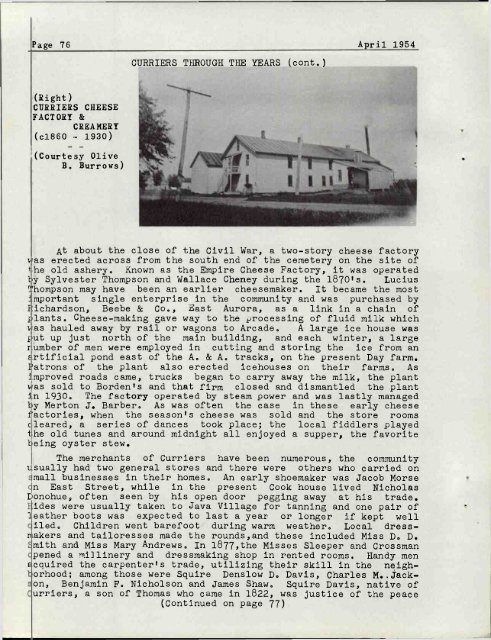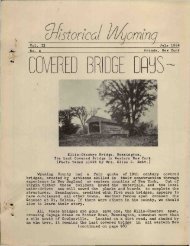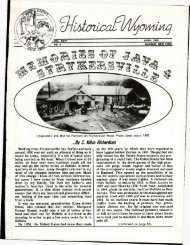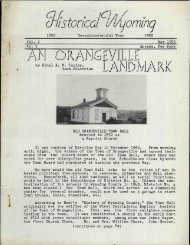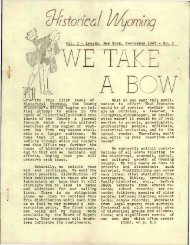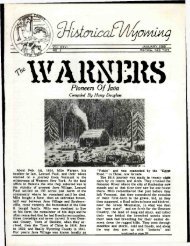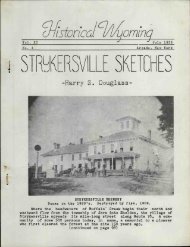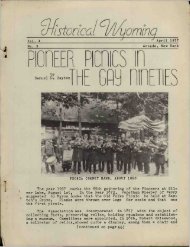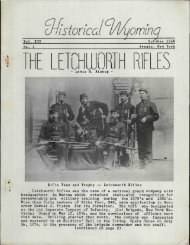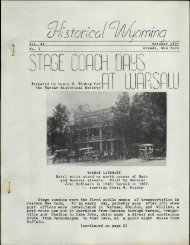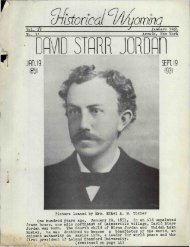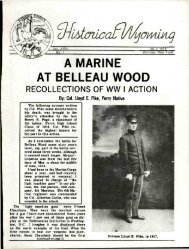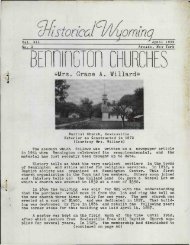y o m i n q by Harry S. Douglass - Old Fulton History
y o m i n q by Harry S. Douglass - Old Fulton History
y o m i n q by Harry S. Douglass - Old Fulton History
Create successful ePaper yourself
Turn your PDF publications into a flip-book with our unique Google optimized e-Paper software.
Page 76 April 1954<br />
(Eight)<br />
CURRIERS CHEESE<br />
FACTORY &<br />
CREAMERY<br />
(cl860 - 1930)<br />
(Courtesy Olive<br />
B. Burrows)<br />
CURRIERS THROUGH THE YEARS (cont.)<br />
At about the close of the Civil War, a two-story cheese factory<br />
was erected across from the south end of the cemetery on the site of<br />
the old ashery. Known as the Empire Cheese Factory, it was operated<br />
<strong>by</strong> Sylvester Thompson and Wallace Cheney during the l870's. Lucius<br />
Thompson may have been an earlier cheesemaker. It became the most<br />
important single enterprise in the community and was purchased <strong>by</strong><br />
Pichardson, Beebe & Co., East Aurora, as a link in a chain of<br />
plants. Cheese-making gave way to the processing of fluid milk which<br />
vas hauled away <strong>by</strong> rail or wagons to Arcade. A large ice house was<br />
put up just north of the main building, and each winter, a large<br />
r.umber of men were employed in cutting and storing the ice from an<br />
artificial pond east of the A. & A. tracks, on the present Day farm.<br />
Patrons of the plant also erected Icehouses on their farms. As<br />
Improved roads came, trucks began to carry away the milk, the plant<br />
vas sold to Borden's and that firm closed and dismantled the plant<br />
3j.n 1930. The factory operated <strong>by</strong> steam power and was lastly managed<br />
<strong>by</strong> Merton J. Barber. As was often the case in these early cheese<br />
factories, when the season's cheese was sold and the store rooms<br />
cleared, a series of dances took place; the local fiddlers played<br />
the old tunes and around midnight all enjoyed a supper, the favorite<br />
being oyster stew.<br />
The merchants of Curriers have been numerous, the community<br />
usually had two general stores and there were others who carried on<br />
mall businesses in their homes. An early shoemaker was Jacob Morse<br />
n East Street, while in the present Cook house lived Nicholas<br />
Donohue, often seen <strong>by</strong> his open door pegging away at his trade.<br />
ides were usually taken to Java Village for tanning and one pair of<br />
feather boots was expected to last a year- or longer if kept well<br />
iled. Children went barefoot during warm weather. Local dressmakers<br />
and tailoresses made the rounds,and these included Miss D» D.<br />
mith and Miss Mary Andrews. In l877,the Misses Sleeper and Crossman<br />
pened a millinery and dressmaking shop in rented rooms. Handy men<br />
sfcquired the carpenter's trade, utilizing their skill in the neighborhood;<br />
among those were Squire Denslow Do Davis, Charles M. jack=»<br />
on, Benjamin F. Nicholson and James Shaw. Squire Davis, native of<br />
urriers, a son of Thomas who came in 1822, was justice of the peace<br />
(Continued on page 77)


